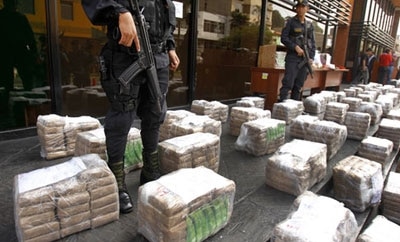Criminal groups are reportedly using Costa Rica to export cocaine shipments to dozens of destinations across the globe, raising new questions about the country’s vulnerability to organized crime.
According to an internal report by Costa Rica’s narcotics police, viewed by Mexican newspaper El Universal, in the past several years shipments of Colombian cocaine have been exported from Costa Rica to 39 different destinations on four continents. The countries receiving drug shipments from Costa Rica included China, Iran, South Africa, Latvia, and many islands of Oceania.
The report is the latest indication of Costa Rica’s rising position as a distribution point for international drug shipments. Authorities have noted that increased amounts of cocaine are being found inside the country, with 15.5 tons of the drug seized in 2012, up from 9.2 tons the previous year.
Costa Rica’s anti-narcotics police have said they dismantled over 100 drug trafficking organizations in 2012, but most of these were local distribution networks: only 12 were international drug smuggling rings.
The Sinaloa Cartel, La Familia Michoacana, and the Gulf Cartel are all believed to have representatives in Costa Rica, although there have been reports that the Zetas also have a presence.
InSight Crime Analysis
Previously, Costa Rica served as a meeting point for Colombian and Mexican cartels to seal deals on the transport of cocaine to the principal market of North America. Now, however, evidence suggests that Costa Rica has moved beyond serving as a “midway point” for drug trafficking organizations moving product north, and is now functioning as a strategic center and base of operations for criminal groups. Mexican transnational criminal groups, with the Sinaloa Cartel at the head of the pack, have established relationships with local partners to expand their drug smuggling and money laundering operations within the country.
[Read InSight Crime’s special report by security analyst Michael Porth on organized crime in Costa Rica, including Parts I, II, and III.]
President Laura Chinchilla, who took office in May 2010, has been vocal about the threat posed to Costa Rica by drug trafficking. However, her administration – currently struggling with low approval ratings – has yet to make any significant headway against organized crime.
In addition to the increase in cocaine seizures, one particularly alarming development is the vulnerability of state institutions to criminal infiltration. Costa Rica, Latin America’s oldest democracy, had previously enjoyed a reputation for robust democratic institutions, but the past year saw several cases of drug-related corruption among police and judicial officials.

